


JULY 17 2025
Our method helps us more efficiently predict how electronic devices will behave over time, which is key to making them more reliable and durable.

JULY 8 2025
A turnover of 5.513 billion euros, 575 companies, 85 startups, and 31,667 employees consolidate La Cartuja as a key hub for the Andalusian economy and Seville's GDP.

MAY 20 2025
Some 253 European SMEs and startups will be able to benefit from this European program.
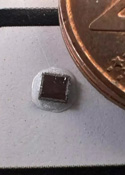
MAY 9 2025
What would be the consequences if a foreign power obtained a quantum computer capable of compromising a country's security? What would happen if this information weren't public? Can we consider ourselves completely safe?
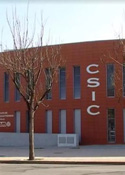
MAY 8 2025
Through the Chip Law, Europe seeks to strengthen its presence in the semiconductor market, which is essential for smartphones and next-generation medical devices.

APRIL 30 2025
Telecommunications and cybersecurity experts explain the reasons for the slow recovery and unstable services.

AUGUST 31 2024
Three companies from the park participate in the US Usechip Chair, together with the Escuela de Ingienería and the Instituto de Microelectrónica de Sevilla.

FEBRUARY 1, 2024
Oscillatory neural networks represent an exciting step forward in our journey toward understanding and emulating the complexity of the human brain, and their impact promises to be profound and lasting.

NOVEMBER 20, 2023
The event camera discriminates relevant information at high speed and reduces consumption by bypassing unnecessary data for efficient processing.

SEPTEMBER 25, 2023
The kick-off meeting of the QUBIP project was held last September 12-13, 2023 in Torino (Italy). QUBIP is an EU-funded project (Horizon Europe programme - "Increased cybersecurity" cluster 3) that is coordinated by LINKS Foundation. In QUBIP, the IMSE participates leading the transition towards Post-Quantum Cryptography in the IoT pilot under the coordination of Dr. Piedad Brox.
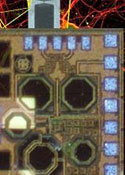
DECEMBER 15, 2022
In neuromorphic computing, the computer mimics the way the brain processes and stores information, achieving much greater energy efficiency and speed than conventional computing.

MARCH 31, 2022
In these times when cyber attacks are the order of the day, the application of security in computer systems is of the utmost importance to prevent access to confidential data.

JANUARY 28, 2022
Interview with the professor at the Universidad de Sevilla and IMSE researcher José Manuel de la Rosa.
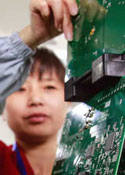
OCTOBER 6, 2021
Article by professor José Manuel de la Rosa on the platform 'The Conversation', about the serious supply problems that the growing demand for chips is causing in various sectors of the industry.
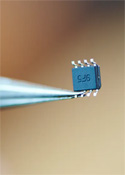
AUGUST 15, 2021
Article by professor José Manuel de la Rosa on the platform 'The Conversation', about the impact that the development of microelectronics is producing in our societies.
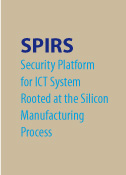
JUNE 15, 2021
IMSE leads the European SPIRS project.
The project will allow Industry 4.0 electronic devices that are connected to a network to increase their security,
exchanging information in a secure way and preserving the privacy of those data that are sensitive due to their content.

FEBRUARY 19, 2021
Something should change in the mentality of those who always see us away from cutting-edge science.
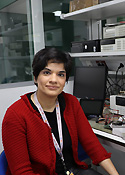
FEBRUARY 17, 2021
Interview with Piedad Brox, researcher at the Seville Institute of Microelectronics, about the world of microelectronics, her research work and the projects being developed at the IMSE-CNM.
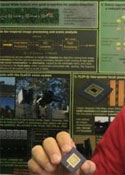
NOVEMBER 30, 2020
Microelectronics is a key technology for innovation.
Ricardo Carmona, IMSE researcher, talks about the importance of microelectronics for the
development of new technologies.
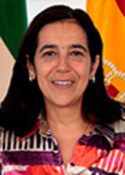
NOVEMBER 17, 2020
Teresa Serrano Gotarredona new Directora General de Investigación y Transferencia del Conocimiento.
IMSE-CNM researcher Teresa Serrano Gotarredona has been appointed by the Consejo de Gobierno
of the Junta de Andalucía as the new Directora General de Investigación y Transferencia del Conocimiento.

OCTOBER 1, 2020
The Mars Environmental Dynamics Analyzer (MEDA) device, designed, manufactured and financed by Spain, will measure the speed and direction of the wind, the humidity, the temperature and the quantity and size of the Martian dust particles.
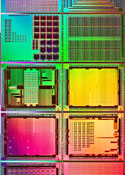
APRIL 14, 2020
Technology tries to imitate the functioning of the brain. Neuromorphic engineering seeks to replicate the functioning of the human nervous system with the intention of solving complex problems in real time and with greater energy efficiency.
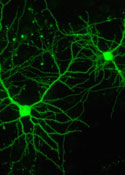
MARCH 16, 2020
A new algorithm allows to identify odors in real time. Researchers seek to create a device that alerts to the presence of toxic elements, substance leaks and calibrates air quality.

FEBRUARY 6, 2020
Cognitive radio, the technology that will make our mobiles more efficient. Artificial neural computing has already begun to be used in some commercial devices.

DECEMBER 19, 2019
The Children's Dermatology area of the Virgen de Rocío Hospital is developing, in collaboration with the Instituto de Microelectrónica de Sevilla, a vision system with low-cost infrared cameras designed and optimized for clinical use.
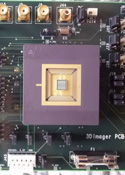
DECEMBER 18, 2019
The FGCSIC COMTE-EBT program was presented, which aims to promote the creation of technology-based companies (EBT) by CSIC researchers. One of the beneficiary projects has been 'PhotonVIS: Vision and image systems through the detection of isolated photons'.
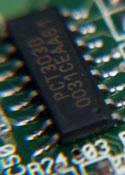
OCTOBER 11, 2018
We are facing a challenge challenging, in which there is still a long way to go and in which significant progress is expected in the short and medium term.

MAY 17, 2018
In the coming years, we hope to increase the self-learning capacity of artificial neural networks in an unsupervised way, based solely on the stimuli received.
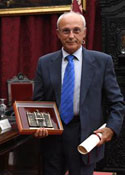
MAY 4, 2018
The Auditorium of the Universidad de Sevilla hosted the delivery of the 1st Prize for Knowledge Transfer to Prof. Ángel Rodríguez Vázquez.
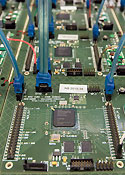
JANUARY 21, 2018
The IMSE research group headed by Teresa Serrano Gotarredona together with her colleague Bernabé Linares Barranco is focused on artificial vision by emulating the tasks of the brain based on the type of architecture that exists in the biological cerebral cortex.
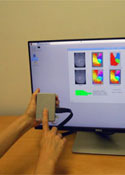
OCTOBER 23, 2017
Researchers from the Instituto de Microelectrónica de Sevilla have patented a new technique of personal authentication through the fingerprint for their process using lower-consumption microelectronic solutions, since they require few processing and memory resources.

SEPTEMBER 27, 2017
Initial conference of the cycle "What do we know about ...?", organized by the Club Prensa Asturiana de La Nueva España in collaboration with the CSIC.

JUNE 20, 2017
A researcher at the Instituto de Microelectrónica de Sevilla, Ricardo Carmona Galán, has obtained an Innovative Training Network (ITN) grant, a Marie S. Curie action within the European Horizon 2020 Framework Program, which amounts to more than 2.2 million of euros.

JUNE 9, 2017
In the line of research on biomedical circuits and systems, one of the main objectives of the Design and Test of Mixed-Signal Integrated Circuits Group of the IMSE is the development of a measurement technique that allows counting cells using electronic circuits.

FEBRUARY 16, 2017
Institutional synergy is a reality that allows the development of high-impact research, teaching and transfer activities, with applications in strategic areas such as space, security, health and transport.

DECEMBER 2, 2016
Attention has recently been given to the development of brain-machine interface (BMI) technology to restore motor function in patients with severe movement limitations, with a view to improving their quality of life.
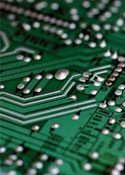
MAY 12, 2016
Current technologies allow the manufacture of chips with more than a million transistors per mm2. Designing electronic circuits and systems that take advantage of this integration capacity efficiently is the main objective of the activities carried out at the Instituto de Microelectrónica de Sevilla (IMSE-CNM).

JANUARY 30, 2016
A Galician company licenses two patents owned by the Universidad de Sevilla and the CSIC to implement an avian mimetic drone with artificial intelligence systems.
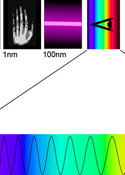
MAY 5, 2016
At the Instituto de Microelectrónica de Sevilla, vision systems capable of detecting color have traditionally been manufactured and implemented. A logical approach is to extend the color operating bands of the sensors beyond trichromatic vision. This would allow us to obtain additional information about the world around us.
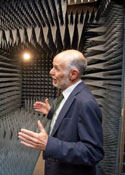
APRIL 7, 2016
The CSIC and the Universidad de Sevilla have approved the transformation of the IMSE-cnm into a joint center for both institutions. The Institute aims to be an international benchmark in the various branches of micro and nanoelectronics related to the design and testing of circuits and integrated systems.

JANUARY 21, 2016
The path towards the real realization of Software Defined Radio / Cognitive Radio (SDR/CR) mobile terminals requires a significant effort in R+D+I, such as the one being carried out by the Unit of Micro/Nanometric Circuits and Systems of the Instituto de Microelectrónica de Sevilla.

FEBRUARY 19, 2015
A new sensor promises more realistic photos and videos without flash or spotlights. The device captures images just like the human eye, which does not need additional lighting conditions to see the details of a scene.

MAY 29, 2015
The vision group of the Instituto de Microelectrónica de Sevilla carries out a line of research on the implementation of privacy measures in artificial vision chips. The objective is to combine the processing and analysis needs of vision algorithms with the preservation of privacy in those applications that allow it.

NOVEMBER 13, 2014
Some television stations must abandon their broadcast frequency to make room for the fourth generation (4G) of mobile phone network.

OCTOBER 10, 2014
The vast majority of today's electronic image sensors of mobile phones, tablets, laptops, cameras, etc., are made on a silicon chip using a technology called CMOS, basically the same type of technology that is used to make the circuits that make up your computer's CPU.
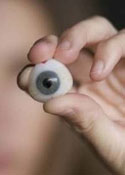
OCTOBER 3, 2014
Developing a synthetic retina seems like a not-too-distant goal. The biggest challenge today is to obtain compact pixels that emulate all the functionalities of the retina, allowing us to build increasingly advanced synthetic retinas.

SEPTEMBER 4, 2014
Neuromorphic systems try to imitate the brain's processing system in order to efficiently carry out complex activities involving perception, motor control, and multisensory integration at high speed and with low consumption.

JUNE 19, 2014
The Arduino module was created in a Milan bar called Il Bar di Re Arduino, which owes its name to an Italian king from the year 1000, and where Mássimo Banzi, then a professor at the Institute of Interactive Design IVREA in Italy, spent some what another time.
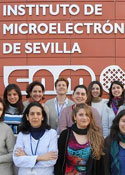
MARCH 8, 2014
The Instituto de Microelectrónica de Sevilla (IMSE-CNM) achieves parity in its staff with the latest additions, almost all girls.
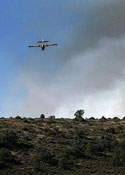
AUGUST 1, 2013
A team of researchers, with the participation of the Instituto de Microelectrónica de Sevilla, has designed a new surveillance system for the early detection of fires using low-cost technology.

JUNE 13, 2012
A multidisciplinary team made up of researchers from the Universities of Seville and Huelva, the IMSE-CNM and the Universidad Politécnica de Madrid are developing microelectronic solutions of small size and consumption for the authentication of people using a password and the physical characteristics of the individual.
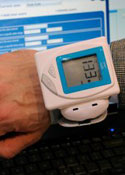
JANUARY 12, 2011
Design of an electronic band aid that measures heart rate and temperature. The device, which works by remote control and without battery, will make it possible to monitor patients from their homes.